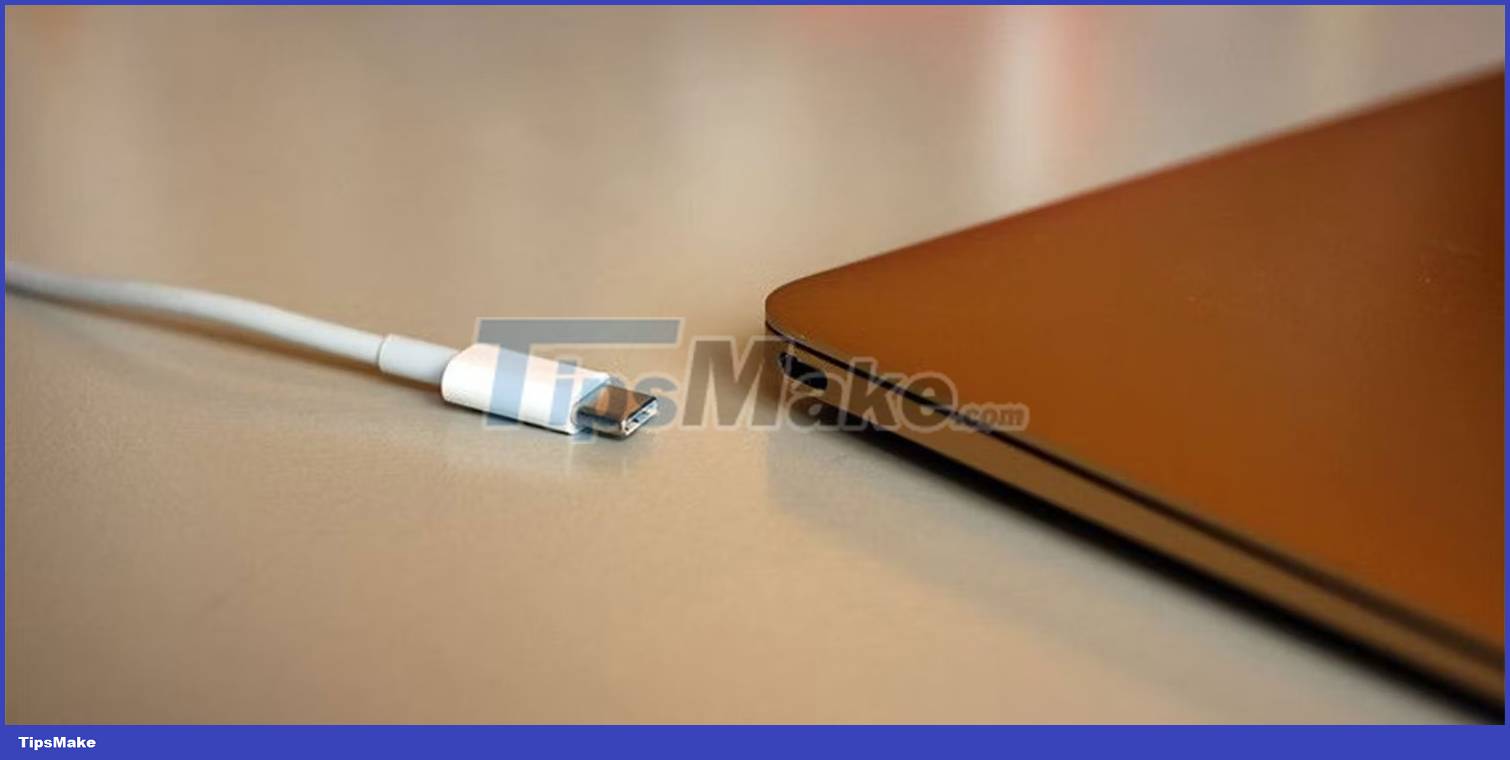What is the maximum data transfer speed that USB-C can achieve?
USB-C, also known as USB Type-C, is the future of wired connectivity. With its oblong, reversible connector, support for other technologies, and even more advanced features, USB-C aims to become a promising universal connector.
However, as transfer speed becomes increasingly important, the question is: How fast can USB-C reach?
When was USB-C launched? Is USB-C backward compatible?

The final USB-C specification was released in August 2014 and features a 24-pin reversible connector that can plug into the port in any orientation. USB-C's design allows it to deliver more power than previous generations, while also working in conjunction with other connectors like USB-A, USB-B, HDMI, DisplayPort, and 3.5mm audio jack.
The name USB-C only refers to the connector type/style, not the USB protocol it supports. Therefore, this same connector supports USB 2.0, USB 3.1 Gen 1 (USB 3.0), USB 3.1 Gen 2, USB 3.2 (and subsequent generations), USB4 and even Thunderbolt 3 and 4.
USB-C connectors are only slightly larger than micro-USB connectors and provide a connection that's thin enough for mobile devices yet strong enough for laptops and other power-hungry devices.
Although the USB-C connector itself is not backward compatible and you cannot plug a USB-C connector into a USB-A port, you can use an adapter to connect your USB-C devices to older USB ports. However, connectivity will be limited to the features provided by the USB-A or USB-B port.
USB-C data transfer standards
As mentioned earlier, USB-C currently supports different protocols and may include many more. These protocols typically support data transfer speeds from 480Mbps to 40Gbps. Higher speeds are theoretically possible but not yet exploitable. Two USB-C cables look similar but transfer data at speeds that can be very different.
- USB 1.x : This is the first USB standard to hit the market. It can transfer data at 1.5 megabits per second (Mbps) at low speed and 12 Mbps at full speed. This generation allowed manufacturers to eliminate legacy ports such as serial and PS/2 ports from their computers, resulting in more compact and portable devices. Today, USB 1.x is largely deprecated, and USB-C cables support USB 2.0 at a minimum (but retain backward compatibility with USB 1.0).
- USB 2.0 : Released in 2000, USB 2.0 improved upon the previous standard and increased the maximum data transfer speed to 480 Mbps.
- USB 3.x : The third generation of the USB protocol has brought significant speed increases. USB 3.2 Gen 2 x 2 uses multi-lane signaling to achieve data transfer speeds of up to 20Gbps.
- USB4 : USB4 is built to Thunderbolt 3 specifications and can tunnel other protocols such as PCie and DisplayPort. USB4 can achieve much faster speeds than USB 3.2, even with existing cables. The USB4 V2.0 specification further increased theoretical transfer speeds to 80 Gbps in bidirectional mode and 120 Gbps in asymmetric mode.
- Thunderbolt 3 : This once-proprietary, now royalty-free standard from Intel also uses a USB-C connector. Thunderbolt 3 supports data transfer speeds of up to 40Gbps,
- Thunderbolt 4 : It supports the same theoretical maximum transfer speed as USB4 and Thunderbolt 3 but increases the PCIe data requirement to 32Gbps from 16Gbps. There are some other differences between Thunderbolt 4 and USB4.
| Standard | Release date | Max speed | Marketing name | Connector types |
|---|---|---|---|---|
| USB 2.0 | 2000 | 480 Mbps | Hi-Speed | USB-A, USB-B, USB Micro-A, USB Micro-B USB Mini-A, USB Mini-B, USB-C |
| USB 3.0/USB 3.1 Gen 1* | 2008/2013 | 5Gbps | USB 3.0, USB 3.1 Gen 1, SuperSpeed, USB 5Gbps | USB-A, USB-B, USB Micro-B, USB-C |
| USB 3.2 Gen 1 | 2011 | 5Gbps | USB 3.0, USB 3.1 Gen 1, SuperSpeed, USB 5Gbps | USB-A, USB-B, USB Micro-B, USB-C |
| USB 3.2 Gen 1x2 | 2017 | 10Gbps | - | USB-C |
| USB 3.2 Gen 2 | two thousand and thirteen | 10Gbps | USB 3.1 Gen 2, SuperSpeed+, USB10Gbps | USB-A, USB-B, USB Micro-B, USB-C |
| USB 3.2 Gen 2x2 | 2017 | 20Gbps | SuperSpeed USB20Gbps | USB-C |
| USB4 Gen 2x1 | 2019 | 10Gbps | - | USB-C |
| USB4 Gen 2x2 | 2019 | 20Gbps | USB20Gbps | USB-C |
| USB4 Gen 3 | 2019 | 20Gbps | - | USB-C |
| USB4 Gen 3x2 | 2019 | 40Gbps | USB40Gbps | USB-C |
| USB4 Gen 4 | 2022 | 80Gbps/120Gbps | USB80Gbps/120Gbps | USB-C |
*: USB 3.0 was launched in 2008, then renamed USB 3.1 Gen 1 in 2013.
What is the maximum theoretical data transfer limit for USB-C?
The USB-C plug can transfer data at extremely fast speeds. USB4 is expected to be able to transfer data at speeds of 80Gbps and 120Gbps, although there are currently no products on the market that support this level. Additionally, future Thunderbolt 5 will likely support similar speeds.
However, currently, the highest data transfer speed you can get from a USB-C connection over both the USB4 and Thunderbolt 4 protocols is 40Gbps, and this speed is available on select Apple, Intel, and AMD laptops. launched after 2020. .
It's worth noting that these speeds are purely theoretical. Therefore, it is very likely that they will vary significantly during actual daily use. In the real world, USB devices sometimes exceed and even fall below these standards.
Some factors that can affect USB transfer speeds include cable length, cable quality, device compatibility (a USB 2.0 to USB 3.2 connection will operate at USB 2.0 speeds), interference and file type sent. Another consideration is the speed of the drive you are using. You will experience much faster data transfers when using a modern PCIe SSD compared to an older hard drive, regardless of the USB standard used.
There are several ways to increase USB data transfer speed on Windows that can be useful whenever you encounter very slow transfer speeds.
You should read it
- How to Calculate Data Transfer Speed
- USB 3.0 has a lot more to offer than 4.8 Gb / s
- Transfer data between computers
- Dropbox Transfer - How to transfer large files very quickly across the network
- 7 ways to transfer data between 2 computers
- Infra-red Wifi is 112 GB per second, 300 times faster than the current speed
- How to transfer data from old iPhone to new iPhone (iPhone X, iPhone 8, iPhone 7)
- How to transfer contacts from iPhone to Android fast & accurately
- USB 3.0: good technology, but still waiting
- How to transfer data from old iPhone to new iPhone with AnyTrans
- How to transfer data from iPhone to Android?
- Ways to transfer data between phone and computer without connecting cable
May be interested

Google will provide automatic software updates on Chromebooks for 10 years

EarPods have also switched to a USB Type-C port

How to enable security notifications on WhatsApp

How to Achieve Financial Freedom by Vlogging About Finance

Uncover Thrills: Salvage Audi RS3 Listings You Can't Miss

How to fix the 'We'll Need Your Current Windows Password' error on Windows 10/11






 How to Calculate Data Transfer Speed
How to Calculate Data Transfer Speed How to speed up internet Win 10 thoroughly
How to speed up internet Win 10 thoroughly Custom guide to increase download speed on IDM
Custom guide to increase download speed on IDM Transfer data between computers
Transfer data between computers USB 3.0: good technology, but still waiting
USB 3.0: good technology, but still waiting How to speed up the process of copying and moving data on USB drives
How to speed up the process of copying and moving data on USB drives